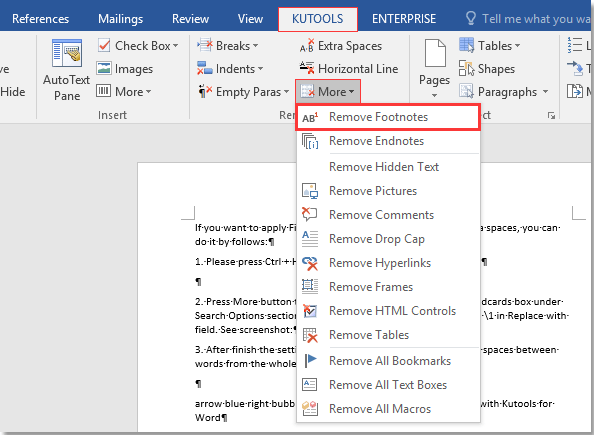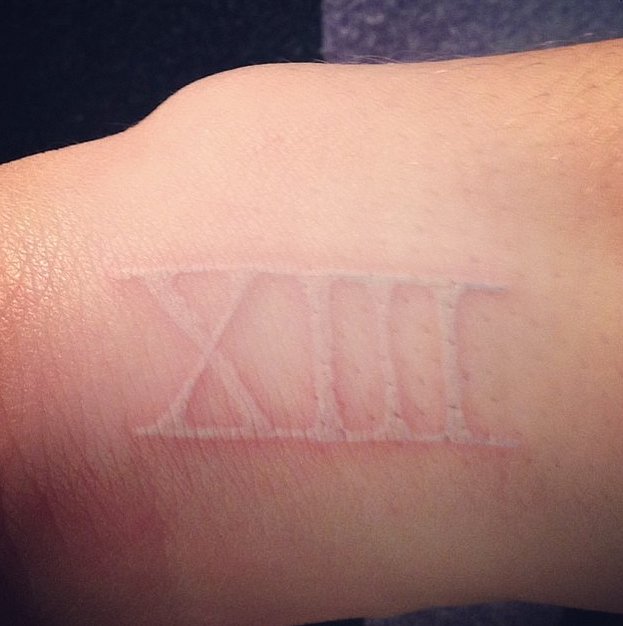Word 2016 For Mac Change Footnotes From Roman Numerals
I would like to change the footnotes in a large Microsoft Word document into endnotes. I would like to change them (hundreds of them) all at the same time. I used to be able to do this on my PC, but I read more. I, ii, iii) and main document pages to be numbered with Arabic numerals (e.g. To format the page numbering for different sections in your 2017 Word for Mac program, follow these steps: 1. Place the cursor at the start of the first line on the page where you want to start or change. Apr 27, 2020 Click on View on the menu bar at the top of the Word window and change the view from 'Print Layout' to 'Draft.' Click on References at the top of the Word Window to see the options for footnotes and endnotes. Click on Show Notes. You should then see an endnotes pane open at the bottom of the Word window. Option for lower-case Roman numerals, then click 'OK'. The page numbering for the section with your Abstract and Table of Contents should change to lower-case Roman numerals. As long as you correctly unlinked the following section from this one, the page numbering in the following section, the main body of your text, should remain Arabic. Is there a way to change the default endnote numbering from Roman to Arabic numerals in Word 2011? I have followed all the instructions in the Help menu and on line and they do NOT work. I have no 'Reference' item on the Word ribbon. I have a Footnote/Endone icon on the Document Elements ribbon but the endnotes default to Roman numerals.
I. To create a custom numbering format, do the following:
1. On the Home tab, in the Paragraph group,choose the Numbering button:
2. In the Numbering list, clickDefine New Number Format... item to display the Define New Number Format dialogbox:
Word 2016 For Mac Change Footnotes From Roman Numerals Chart
3. In the Define New Number Format dialog box:
- Number style - Specifies the numbering style that you want. Choices include Arabic numerals,uppercase and lowercase Roman numerals, uppercase and lowercase alphabet letters, and word series(1st, One, and First). You can also choose no numbers at all, killing the sequential numbering.
- Font... - Specifies the special font or font attributes (such as bold, italic, and underline)and the point size for the numbers. A standard Font dialog box appears when this button is chosen.
- Number format - Types the characters, if any that you want to come before each number. If youwant each number enclosed in parentheses, for example, type an opening parenthesis before the numberin this box.
Do not type over this number in this box! If you do so, even replacing it with anothernumber, you will break the automatic numbering; each number in the list will be the same. - Alignment - Sets the distance from the left, centered or right margin that Word places thenumber.
II. To create a custom multilevel list format, following:
On the Home tab, in the Paragraph group, choose the Multilevel List button andclick Define New Multilevel List... item to display the Define new Multilevel List dialogbox:
If the button in the lower-left corner is the More >> button, click it. Word displays anextra panel at the right of the dialog box, so you see the full dialog box, as shown here. Word alsochanges the More >> button to a << Less button that you can click to hide theextra section of the dialog box again.

- In the Click Level To Modify, select the list level you want to change. Word selects thefirst level, 1, when you open the Define New Multilevel List dialog box.
- If you need to link this numbered list level to a particular style, select the style in the LinkLevel To Style drop-down list.
- Use the controls in the Number Format area to specify the number format.
- In the Number Style For This Level drop-down list, select the number format you wantto use. For example:
- '1, 2, 3,'
- 'i, ii, iii,'
- 'A, B, C.'
- To include the number from the previous level (or a higher level), choose the level from theInclude Level Number From drop-down list. (This drop-down list is unavailable for thefirst level because there's no level above it.) For example: if Level 1 uses '1, 2, 3'numbering and Level 2 uses 'a, b, c' numbering, applying Level 1 in the Include LevelNumber From drop-down list to Level 2 changes the Level 2 numbering to 1a, 1b, andso on.
- Word displays the number formatting you've chosen in the Enter Formatting For Numbertext box. Type any changes for the text of the format into this text box. For example, youmight edit the 'A)' format to 'Section A)' so that each instance of the number included theword 'Section.'
- To specify font formatting, click the Font button. Word displays the Fontdialog box. Choose the font, font style, size, and any extras (such as color or effects),and then click the OK button.
- To customize the numbering, use the Start At spinner to change the starting number.If you want to restart numbering after a certain level, select the Restart List Aftercheck box and choose that level in the drop-down list. (The Restart List Aftercontrols aren't available for the first level in the list, because there's no higher level.)
- Select the Legal Style Numbering check box if you want to use legal-style numbering:changing any roman numeral to an Arabic numeral. For example, 1.1.1 instead ofI.1.1.
- In the Number Style For This Level drop-down list, select the number format you wantto use. For example:
- Use the controls in the Position box to customize where the number appears.
- In the Number Alignment drop-down list, choose Left, Centered, orRight.
- In the Aligned At text box, choose the position at which to align the number.
- In the Text Indent At text box, set the indent position for the text.
- In the Follow Number With drop-down list, select the character to include after thenumber: a tab, a space, or nothing. If you choose a tab, you can select the Add Tab StopAt check box and set the distance at which to place a tab stop.

Note: more details are availablein the Numbered lists sectionin the Work with bulleted, numbered and multi-level lists lessonof the Create basic documents free course.
Word 2016 For Mac Change Footnotes From Roman Numerals To Text
See also this tip in French:Comment personnaliser une liste numérotée.
I half-converted to Macs three years ago, but continued to use a PC desktop until a year ago; and on the PC, the Word default of numbering endnotes with small Roman numerals (i, ii, iii) was easy to fix, so I continued running that fix on the PC. Now I no longer have that crutch, and I've been searching all over my MacBook Pro to find a way to do it, and failing. Obviously I can do it manually: do a cut-and-paste, recreating each endnote with the proper numbering system. But I really want to LEARN how to it right!
Word 2016 For Mac Change Footnotes From Roman Numerals To Copy
MacBook Pro with Retina display, OS X Mountain Lion (10.8.4)
Word 2016 For Mac Change Footnotes From Roman Numerals To English

Microsoft Word Change Footnotes From Roman Numerals

Posted on Aug 8, 2013 7:44 PM